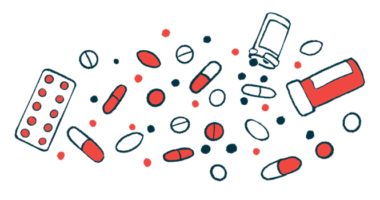Use of combination therapy in PAH has increased in last decade: Study
A study shows its use grew from 8.8% of patients to 18.3% in the last three study years

The proportion of people with pulmonary arterial hypertension (PAH) who start on a combination of medications after they’re diagnosed is low, but has increased over the last decade, a study shows.
The findings were presented at the 2023 American Thoracic Society (ATS) International Conference, in the poster, “Real-World Use of Upfront Combination Therapy in Pulmonary Arterial Hypertension (PAH) Patients.”
Several therapies are approved for treating PAH. The most recent guidelines, published last year by the European Society of Cardiology (ESC) and European Respiratory Society (ERS), recommend that PAH patients who don’t have co-occurring heart or lung problems and are deemed at low/intermediate risk should start on a combination of two therapies.
For older patients or those with co-occurring heart and lung problems, it’s recommended that patients start on one type of therapy, either an endothelin receptor antagonist (ERA) and a phosphodiesterase-5 inhibitor (PDE5i), with further treatment decisions made on an individual basis.
Data on how combination therapies are used in real-world practice are scarce. To learn more, scientists at Janssen Pharmaceuticals analyzed U.S. insurance data between 2013-2021, before the newest guidelines were released.
The team identified data on more than 2,000 adult patients starting on PAH treatment who had at least one inpatient or at least two outpatients claims for the disease.
Support growing for combination therapy to treat PAH
Among them, 258 were started on a combination of Opsumit (macitentan) — an ERA sold by Janssen — and a PDE5i. The remaining 1,956 were started on either of these types of medication, referred to as monotherapy. Most initially were given a PDE5i.
“Clinical evidence has shown that initial combination therapy targeting multiple PAH-specific pathways improves functional and long-term outcomes compared to monotherapy. However, many patients are initially not escalated to combination therapy for various reasons,” Sumeet Panjabi, senior director, real-world value and evidence at Janssen, said in an email to Pulmonary Hypertension News. “Considering the limited use of upfront combination therapy overall, there is a risk for the undertreatment of patients.”
Patients on monotherapy were older, more commonly male, and had a lower mean score in the Charlson Comorbidity Index, which reflects the number and severity of coexisting conditions, compared to those given combination therapy. In both groups, most patients had co-occurring heart or lung problems. The proportion of patients without such problems was 14.3% in the combination group and 24.5% in the monotherapy group.
“Our data shows that patients receiving combination therapy have as many cardiopulmonary comorbidities as those receiving monotherapy and demonstrates that physician preference is to treat with combination therapy when warranted,” the researchers wrote, adding there were generally a few weeks between the first and second PAH medications and it was still regarded as combination therapy to account for authorization and other issues that may happen when patients are prescribed Opsumit.
While the overall use of combination therapy was low, data suggest it’s becoming more common. In the first three years of the study, only 8.8% of patients were on combination therapy. This increased to 18.3% in its last three years.
“Our data show an increase in the use of combination therapy when we look at the time period 2017-2020 compared to the time period 2013-2016,” Panjabi said. “As updated Guidelines were released in August 2022, what we observed previously leads us to be optimistic about the uptake of the recommendations in the updated 2022 Guidelines and for the likelihood of future treatment patterns being informed by these recommendations. We expect these findings will spur clinicians to assess their PAH patients’ risk status early and often and consider the latest 2022 ESC/ERS guidelines to initiate or rapidly escalate appropriate patients to dual combination therapy with a PDE5i and an ERA.”
Janssen is developing a single-tablet combination therapy that combines the ERA in Opsumit with tadalafil, a PDE5i sold as Adcirca by United Therapeutics.
“A single-tablet combination therapy would greatly benefit these monotherapy users to help them get guideline-recommended treatment from day 1,” the researchers wrote.
Janssen’s subsidiary Actelion is sponsoring a Phase 3 trial called A DUE Phase 3 (NCT03904693) to test the combination therapy. Data announced earlier this year suggested it outperformed both individual medications at improving blood flow in the lungs.








